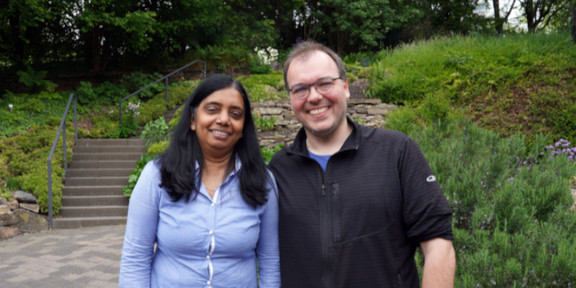DFG funds interdisciplinary project on novel rare earth materials for magneto-optical applications
- News
- Research

Rare earth materials are highly interesting for both basic and industrial research, as their unique physical and chemical properties offer a wide range of applications from solar research, opto-electronic devices to opto-magnetism. For example, it has been shown in recent years that their fascinating properties are based on the special 4f electron shell configuration, which has a significant effect on optical, magnetic and electrical behaviour. Therefore, there is enormous potential in the development of rare earth materials, especially with regard to modern technologies such as quantum sensing and the processing and storage of quantum information.
The DFG-funded interdisciplinary and inter-university project aims both to develop new growth processes for rare earth sulphides and to decipher their magneto-opto-elastic properties. The project's challenging research questions are answered by the complementary expertise of Prof. Dr. Dr. h. c. Anjana Devi (Chemistry of Inorganic Materials, Ruhr University Bochum) and Dr. Jörg Debus (Experimental Physics, Technical University Dortmund). While Anjana Devi synthesises the rare earth sulphide layers with tailored properties, Jörg Debus investigates the magneto-optical phenomena using laser spectroscopic methods. The synergetic cooperation of Anjana Devi and Jörg Debus, which has already resulted in a joint publication [1] in a renowned journal, will contribute significantly to the understanding of the molecular chemistry and physics of rare earth structures and thus to their technological success.
The challenges associated with the currently limited physicochemical properties of the reactive starting molecules for the rare earth layers will be addressed in the project between the two UA Ruhr universities and improved by a rational approach to layer design. In addition to the crystallographic structure, composition and morphology of the synthesised rare earth sulphide layers, the layer thickness in particular will be scaled down to the sub-nanometre range to produce two-dimensional rare earth sulphides. The layer thickness variation is an essential control screw to tune the magneto-optical and magneto-elastic properties of the rare-earth sulphides. This tailoring allows the exploration of optically bright and dark electronic transitions as well as their coupling to an external magnetic field and to the atomic lattice, which is associated with so-called magnon-phonon interactions. Advanced methods of resonant laser spectroscopy, developed in experimental physics 2 at TU Dortmund University, are used here. A phenomenon of particular interest for magneto-optical applications is the laser-based generation of collective states with a huge magnetisation that is several 1000 times larger than the magnetisation of the starting material. These optically induced ferromagnetic states can be used for quantum-based information processing. For this purpose, their formation, manipulability and temporal stability are to be investigated.
Anjana Devi and Jörg Debus are looking forward to the meetings for the exchange of ideas and the joint neighbourly collaboration. The newly developed rare earth sulphides with tailored functional properties in combination with resonant laser spectroscopy will provide a comprehensive insight into the potential of these rare earth materials for opto-electronic and magneto-optical applications.
[1] Beer, S.M.J., Muriqi, A., Lindner, P., Winter, M., Rogalla, D., Nolan, M., Ney, A., Debus, J., Devi, A., Ferromagnetic Europium Sulfide Thin Films: Influence of Precursors on Magneto-Optical Properties, Chem. Mater. 34, 152 (2022); cover page.










